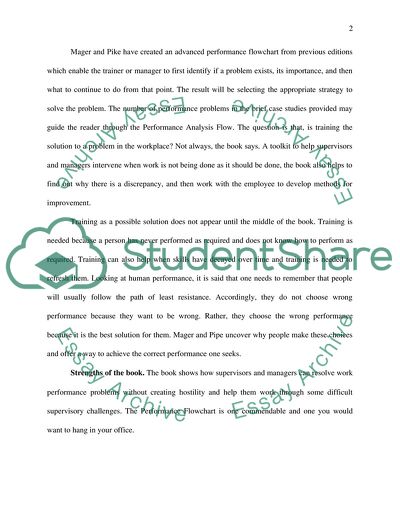Cite this document
(Problems Solved in Analyzing Human Performance by Robert Mager and Peter Pipe Book Report/Review Example | Topics and Well Written Essays - 1500 words, n.d.)
Problems Solved in Analyzing Human Performance by Robert Mager and Peter Pipe Book Report/Review Example | Topics and Well Written Essays - 1500 words. https://studentshare.org/education/1542181-book-review-analyzing-human-performance-by-robert-mager-and-peter-pipe
Problems Solved in Analyzing Human Performance by Robert Mager and Peter Pipe Book Report/Review Example | Topics and Well Written Essays - 1500 words. https://studentshare.org/education/1542181-book-review-analyzing-human-performance-by-robert-mager-and-peter-pipe
(Problems Solved in Analyzing Human Performance by Robert Mager and Peter Pipe Book Report/Review Example | Topics and Well Written Essays - 1500 Words)
Problems Solved in Analyzing Human Performance by Robert Mager and Peter Pipe Book Report/Review Example | Topics and Well Written Essays - 1500 Words. https://studentshare.org/education/1542181-book-review-analyzing-human-performance-by-robert-mager-and-peter-pipe.
Problems Solved in Analyzing Human Performance by Robert Mager and Peter Pipe Book Report/Review Example | Topics and Well Written Essays - 1500 Words. https://studentshare.org/education/1542181-book-review-analyzing-human-performance-by-robert-mager-and-peter-pipe.
“Problems Solved in Analyzing Human Performance by Robert Mager and Peter Pipe Book Report/Review Example | Topics and Well Written Essays - 1500 Words”. https://studentshare.org/education/1542181-book-review-analyzing-human-performance-by-robert-mager-and-peter-pipe.


